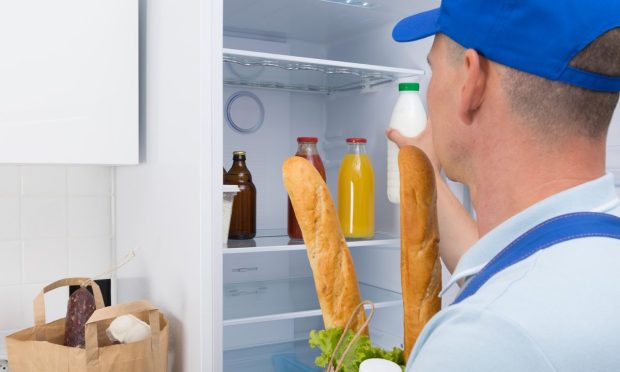For Walmart and Amazon, the Fridge is the New eGrocery Frontier

It seems that, when it comes to getting their groceries, consumers’ willingness to sacrifice privacy for convenience may go well beyond what many grocers have imagined thus far. Walmart just announced a major expansion to its program that delivers groceries right to consumers’ refrigerators, a program similar to one that Amazon currently offers with its Key In-Garage deliveries, providing the opportunity to equip consumers’ homes with smart technology.
On Wednesday (Jan. 5), the United States’ largest grocer said it will be multiplying the scope of the program fivefold. Where now, its InHome direct-to-fridge service is available to 6 million consumers, the 3,000-driver expansion of the program’s workforce aims to increase that reach to 30 million.
Read more: Walmart Hiring 3K Drivers for InHome Direct-to-Fridge Grocery Delivery Expansion
“We’ve been operating InHome in select markets over the last two years and have found it is a perfect solution for customers who want to live their lives without worrying about making it to the store or being home to accept a delivery,” Tom Ward, senior vice president of last mile at Walmart U.S., said in a statement.
The program, by which Walmart associates enter consumers’ homes by entering a one-time code into smart locks on their garage or front doors, a process recorded to a video that the consumer can review, incentivizes grocery delivery shoppers who work away from home to purchase smart home technology from Walmart, giving the retailer access to information about more of their habits as well as newfound opportunities to communicate with these customers.
Amazon appears to be seeing positive results with a similar program, though others of its kind have been less successful. For instance, in late October, the retailer shut down its car trunk delivery program, Key In-Car Delivery, with a company spokesperson saying that Amazon instead aimed to step up its in-garage delivery efforts.
“While our plan was to reactivate In-Car Delivery as soon as we could, it will remain suspended indefinitely,” the company told Prime members at the time.
Related news: Amazon Closes Car Trunk Delivery Service
After the November 2020 launch of the Key by Amazon In-Garage Grocery Delivery program in five cities, the company announced in April 2021 that it was expanding the service by several orders of magnitude to reach 5,000 United States cities and towns. At the time, Pete Gerstberger, head of Key by Amazon, said those who had tried it “have loved the service.” With many of the consumers who had grown used to ordering groceries for delivery during quarantine having returned to the office, the appeal of such a program is clear.
The market opportunity is sizable. Findings from PYMNTS’ study The Bring-It-To-Me Economy: How Online Marketplaces And Aggregators Drive Omnichannel Commerce, created in collaboration with Carat from Fiserv, which surveyed more than 5,200 U.S. adults about their purchasing habits, show that 57% of consumers use digital channels to buy groceries. Additionally, 46% reported that they had been purchasing groceries online more than they used to prior to March 2020.
You may also like: Bring-It-To-Me Economy Ascends As Consumers Embrace Home-Centric Lifestyles
However, research from PYMNTS’ What Consumers Expect From Their Grocery Shopping Experiences study, created in collaboration with ACI Worldwide, which surveyed more than 2,300 U.S. grocery shoppers about their buying behaviors, found that Walmart’s popularity was actually slipping. Between October of 2020 and June of 2021, an eight-month period, the portion of shoppers who reported primarily shopping at Walmart fell from 39% to 31%, while the share primarily shopping at other large national chains grew from 28% to 39%. Perhaps, with moves such as this, targeting the evolving needs of convenience-seeking consumers, the grocer will be able to regain some of these losses.
Related news: Digital Features Can Help Grocers Win Over 43 Percent Of Shoppers
